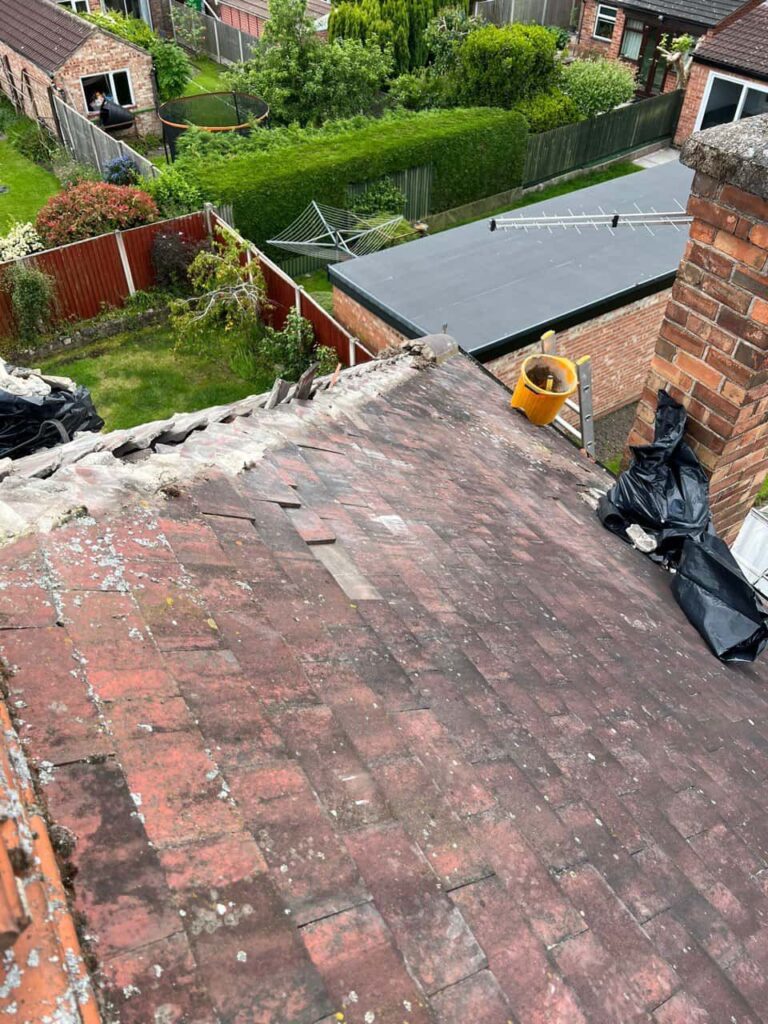Introduction: Climate change is increasingly influencing weather patterns across Isleham and the wider UK, impacting various aspects of our daily lives, including the integrity of our roofs. Understanding how these changes affect roof leak frequency is crucial for homeowners looking to protect their properties from water damage and ensure long-term structural stability.
Increased Extreme Weather Events
- Heavy Rainfall:
- Impact: Climate change has been linked to increased intense rainfall events. Heavy downpours can overwhelm roofs, especially those with compromised drainage systems or inadequate waterproofing.
- Effect: Higher frequency and intensity of rainfall can lead to more frequent roof leaks, as water finds its way through vulnerable points such as damaged shingles or poorly sealed seams.
- Storms and Wind Damage:
- Impact: Changing weather patterns can result in more frequent storms and high winds, which can loosen or dislodge roofing materials, including tiles or shingles.
- Effect: Roof damage caused by storms can create entry points for water, contributing to leak occurrence during subsequent rainfall.
Temperature Fluctuations
- Freeze-Thaw Cycles:
- Impact: In colder months, fluctuating temperatures can lead to freeze-thaw cycles. Water trapped in cracks or gaps in roofing materials expands when frozen, causing further damage.
- Effect: Over time, repeated freeze-thaw cycles weaken roof materials, making them more susceptible to water infiltration and subsequent leaks.
- Heat Stress:
- Impact: Prolonged exposure to higher temperatures can accelerate the ageing process of roofing materials, causing them to become brittle or warp.
- Effect: Brittle materials are prone to cracking or breaking, compromising the roof’s ability to repel water effectively and increasing the likelihood of leaks during rainstorms.
Mitigating the Effects of Climate Change on Roof Leaks
- Regular Roof Inspections:
- Recommendation: Schedule routine roof inspections by qualified professionals to assess the condition of your roof and identify potential vulnerabilities.
- Action: Prompt detection of minor issues allows for timely repairs, preventing them from escalating into costly leaks during adverse weather conditions.
- Investing in Quality Roofing Materials:
- Recommendation: Choose high-quality roofing materials to withstand local weather and climate challenges.
- Action: Ensure proper installation and maintenance to maximise the longevity and performance of your roof against changing climate impacts.
- Improving Roof Drainage and Ventilation:
- Recommendation: Enhance roof drainage systems to efficiently channel water away from the roof surface and prevent pooling.
- Action: Adequate ventilation helps regulate temperature and moisture levels within the attic, reducing the risk of condensation and associated roof damage.
Conclusion: As climate change continues to alter weather patterns in Isleham and beyond, the frequency and severity of roof leaks are expected to increase. Proactive measures, such as regular inspections, quality materials, and improved drainage, are essential for mitigating these effects and ensuring your roof remains resilient against adverse weather conditions. At Isleham Roofing Repairs, we are committed to helping homeowners safeguard their properties with expert roofing services.
Call us on: 01638 591 695
Click here to find out more about Isleham Roofing Repairs
Click here to complete our contact form and see how we can help you with your roofing needs.

